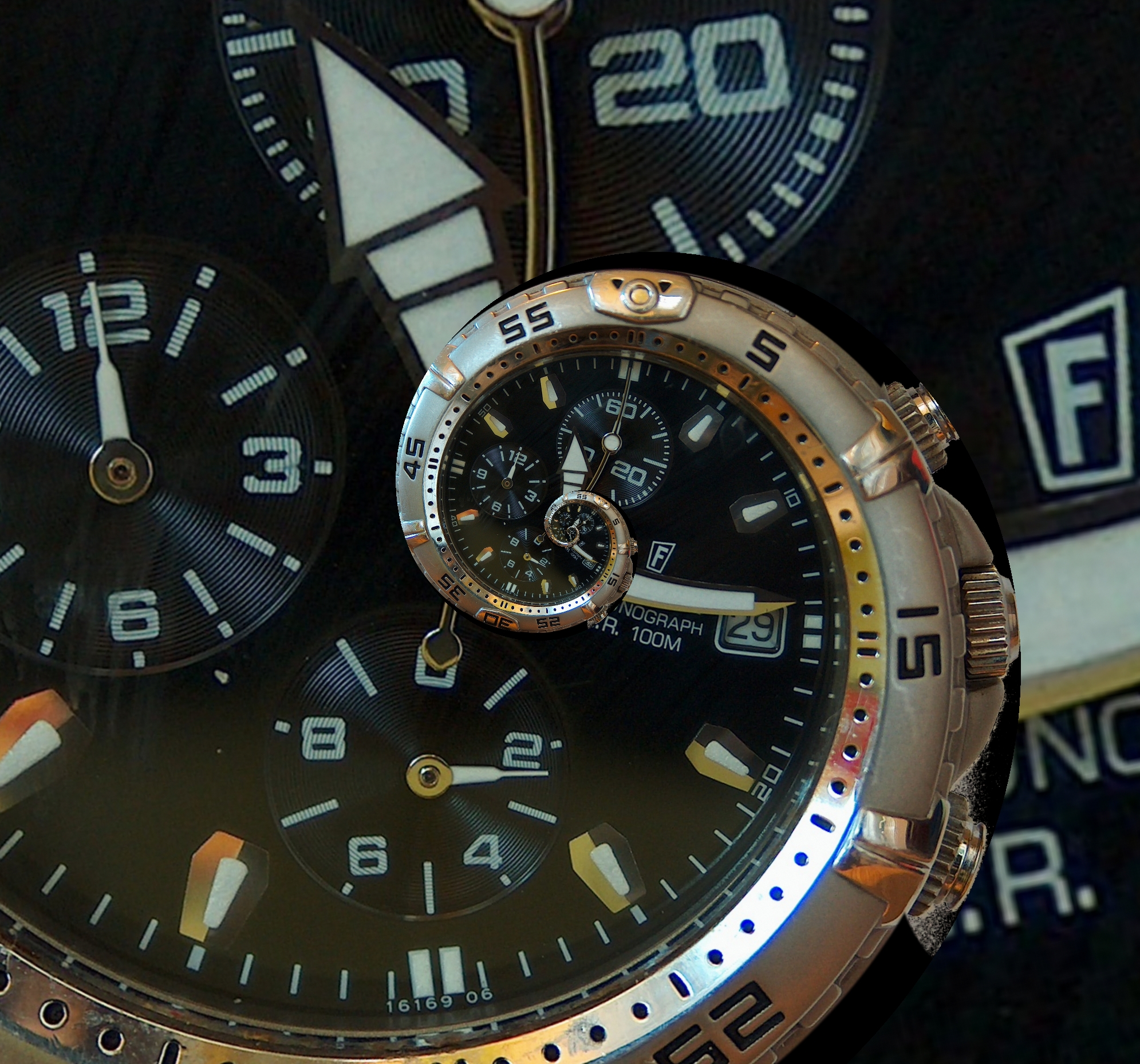 I just finished watching the anime The Melancholy of Suzumiya Haruhi in the original broadcast order, which renders it the most non-linear TV show I’ve ever seen outside of Lost. Only two pairs of shows in the 14-episode series follow each other chronologically. And it works, not just on a narrative level, but thematically with the low-key but extremely surreal nature of the show.
I just finished watching the anime The Melancholy of Suzumiya Haruhi in the original broadcast order, which renders it the most non-linear TV show I’ve ever seen outside of Lost. Only two pairs of shows in the 14-episode series follow each other chronologically. And it works, not just on a narrative level, but thematically with the low-key but extremely surreal nature of the show.
It lead me to thinking about the nature of chronology in storytelling. It is something that beginning writers are often explicitly told not to screw around with. Everyone, I think, has been told by someone (usually they’re trying to be helpful) to NEVER use a flashback. Of course, that’s somewhat bogus information, akin to telling a three-year old to NEVER touch the stove. Right now they’re only going to hurt themselves, but when they grow up, they’ll have to cook themselves dinner.
So the whole array of frame stories, flashbacks, braided narratives can be filed under “advanced techniques, use with caution” along with dialect, second person POV, unreliable narrators, and unsympathetic protagonists. Nothing wrong with them, they’re just easy to screw up.
However, both Lost and Suzumiya Haruhi show how to use the technique well. First thing, always ground your audience in space and time before commencing a narrative in a new time period. Lost does this both with a contrast in settings and a musical sting, Suzumiya Haruhi begins each episode with narration placing us in a specific time during the school year.
Another good practice, if you’re flipping back and forth, is to carry narrative threads from one sequence to the next sequence that follows chronologically. In almost every Lost episode we see this happening, both the Island narrative and the Off-Island narrative move forward in time as the episode progresses, and it also spans episodes such as this year’s storyline showing Jack’s disintegration after he leaves the Island. With Suzumiya Haruhi the narrative (in the broadcast sequence) often jumps across an episode, where a cliffhanger will be picked up after an intervening episode that happens later or earlier, the nature of a cliffhanger helping maintain the momentum of the suspended storyline— much as US TV uses season finales to carry over a summer hiatus.
Most important, both use a non-linear chronology to build tension toward a climax. Both this season of Lost and Suzumiya Haruhi are narrative spirals, essentially circling around to a climactic event that happens, chronologically, in the middle of the narrative. This can be a very effective technique when used well, since the importance of the climax builds not only on our knowledge of what led to it, but our knowledge of its consequences.


2 Comments
Kerrie · June 29, 2008 at 1:11 pm
I am actually a big fan of flashbacks in books and on TV, but they have to be done well in order to be effective. I think your article will help people to make their flashbacks effective.
Incurable Disease of Writing » Blog Archive » Just Write Blog Carnival June 27, 2008 Edition · June 27, 2008 at 7:05 am
[…] Andrew Swann presents Chronologically Incorrect Storytelling posted at […]
Comments are closed.